Published May 1, 2014
Trek Archive: Publicizing TNG's "Bloodlines"
Trek Archive: Publicizing TNG's "Bloodlines"
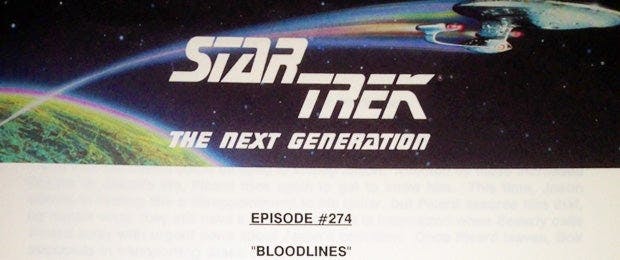
Today, we’re pleased to introduce a new regular feature on StarTrek.com. At least once a month we’ll dip into what we’re calling the Trek Archive, mountains of stuff that reveal how the various Star Trek television shows and films were promoted, including press releases, newsletters, faxes and press kits. There will be other goodies, too, among them call sheets used during production, design sketches and promo items.Tomorrow, for example, marks the 20th anniversary of the Star Trek: The Next Generation episode “Bloodlines.” It debuted on May 2, 1994. During TNG’s run, Paramount Pictures relied on the public relations firm Bender Goldman & Helper to handle the show's publicity. That encompassed everything from arranging interviews for the talent and securing entertainment show segments and cover stories in the major magazines to handling set visits, arranging/overseeing photo shoots, creating press kits and much, much more. The Internet was still in its infancy then, and so BG&H routinely faxed editors and freelance journalists at newspapers and magazines a schedule of what episode would air and when. (See below)
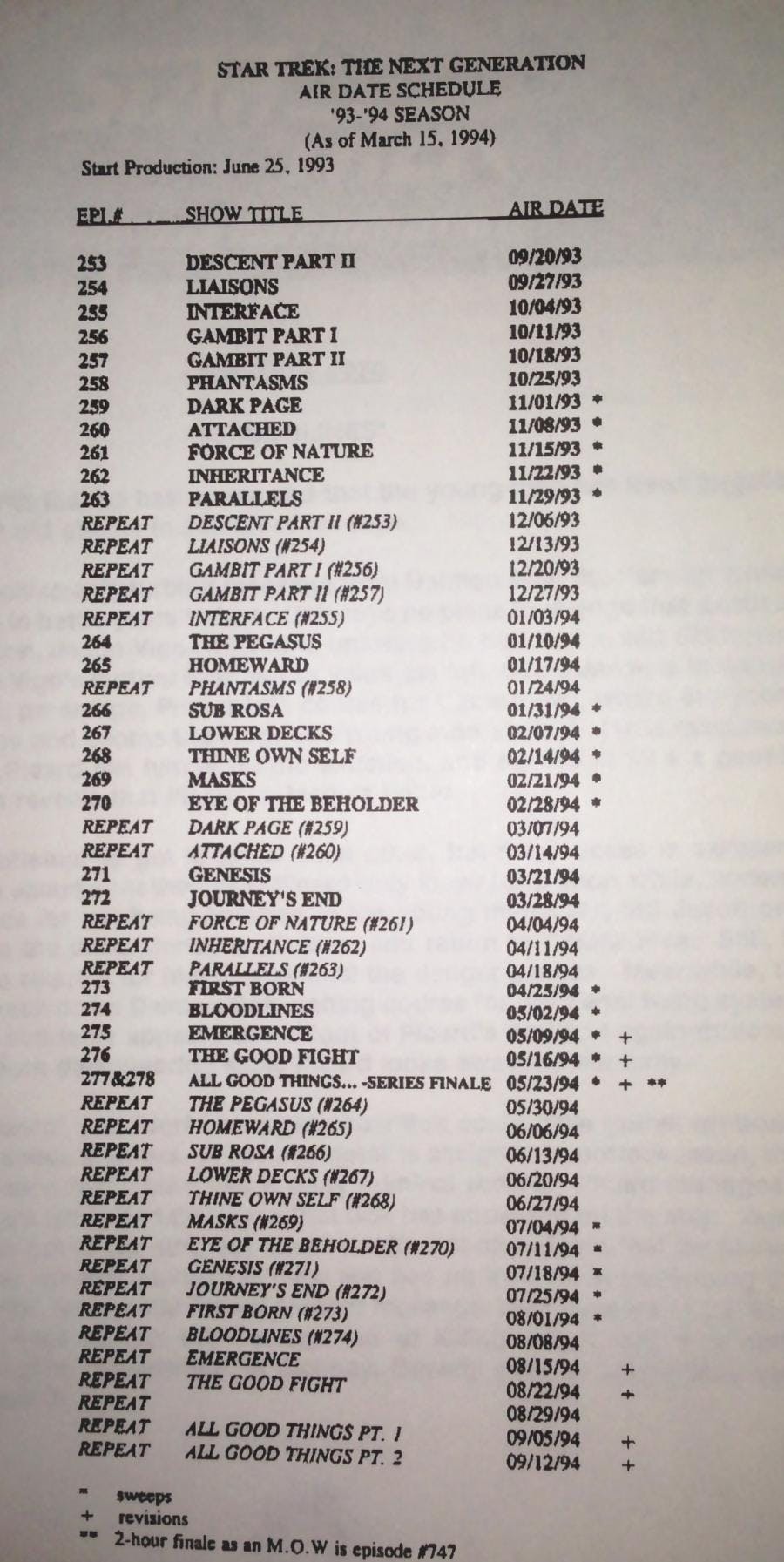
BG&H also, each week, snail-mailed journalists and editors an oversized envelope that included a full synopsis of a TNG episode, along with an 8x10 black and white photo. The photo was usually split, with two or sometimes three images representing the episode. The full synopses started with a one-line synopsis and then went into full detail, covering the better part of two pages each time. Journalists relied on these synopses for such vital information as the names and correct spellings of planets, ships, guest characters, etc. Note how the “Bloodlines” synopsis references Daimon Bok, Jason Vigo, the Xendi Kabu system and Camor Five. The synopses – which were signed off on by the show’s executive producers -- also always included the names and spellings of the core TNG cast, plus guest stars, as well as writer and director credits. (See below)
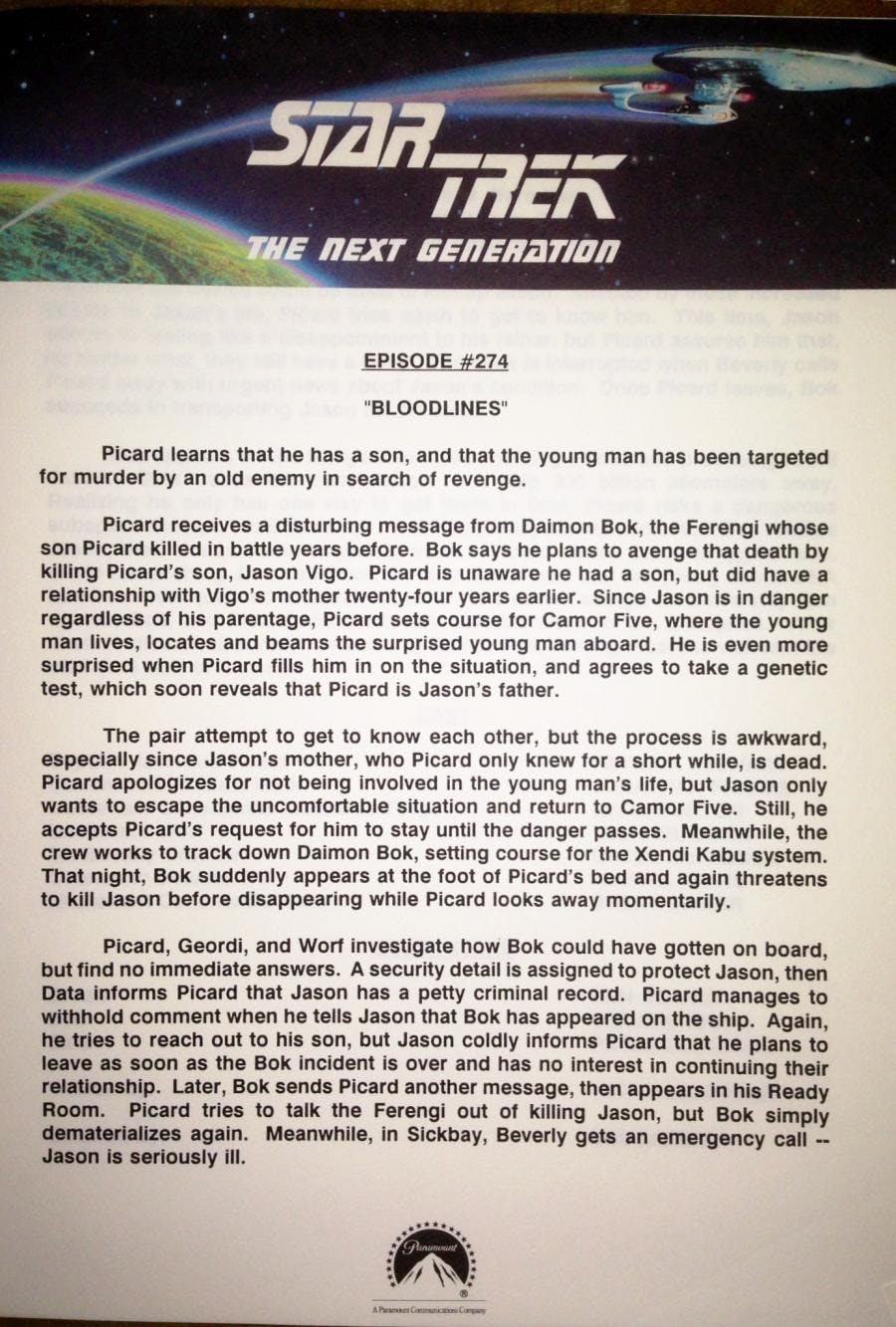
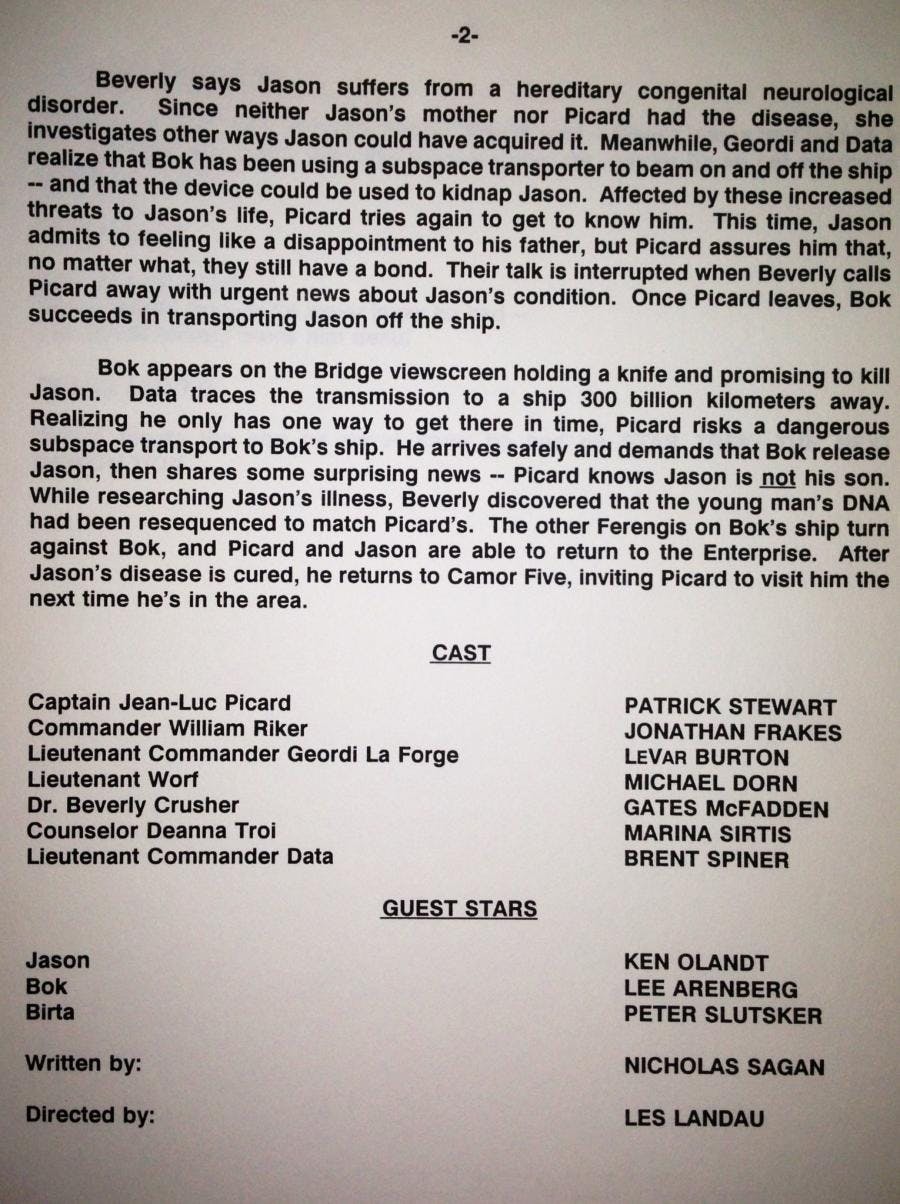
The third page of each synopsis also included a Program Highlight, TV Guide Ad and TV Log Listing. The Program Highlight once again offered a very short summation of the episode’s plot, while the TV Guide Ad would be the copy that appeared that week in the nation’s go-to TV magazine. And, finally, the TV Log Listing was an even tighter synopsis used by newspapers and any other magazines that ran daily or weekly television listings. Of course, many papers used whatever photo BG&H provided to illustrate/spotlight the listing. (See below)
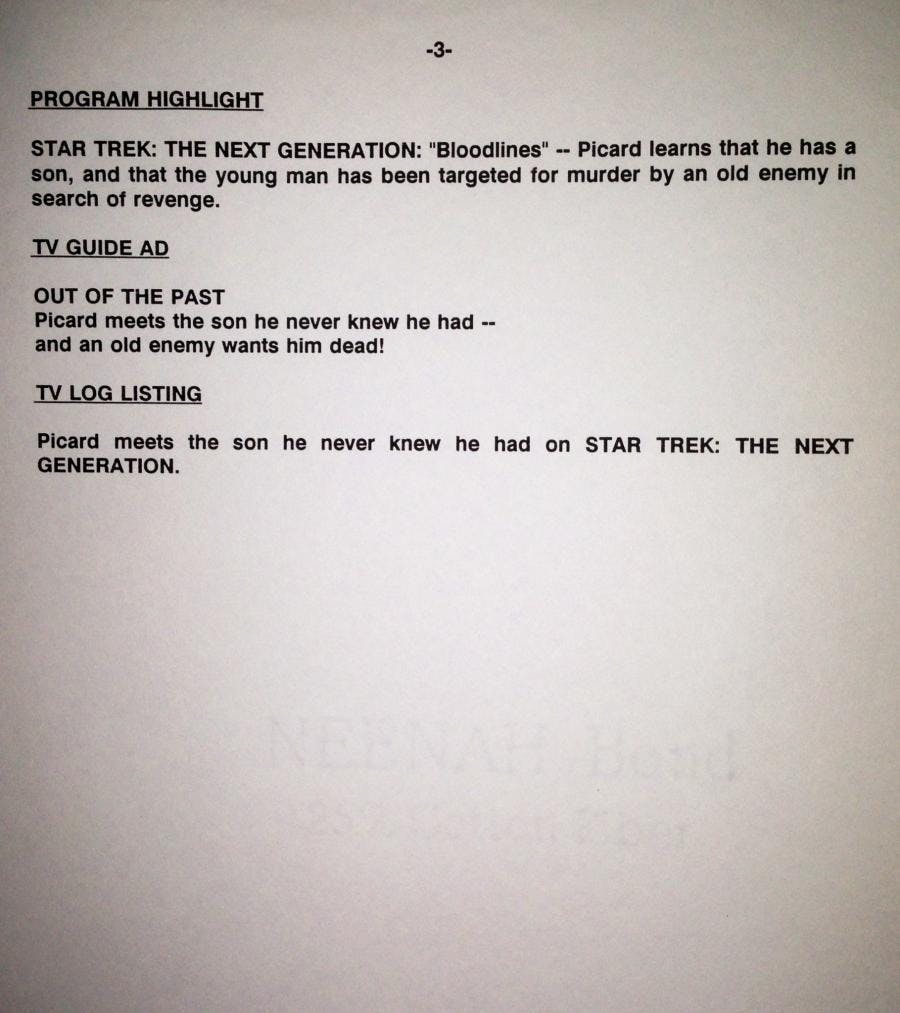
Keep an eye on StarTrek.com for future Trek Archive features.

